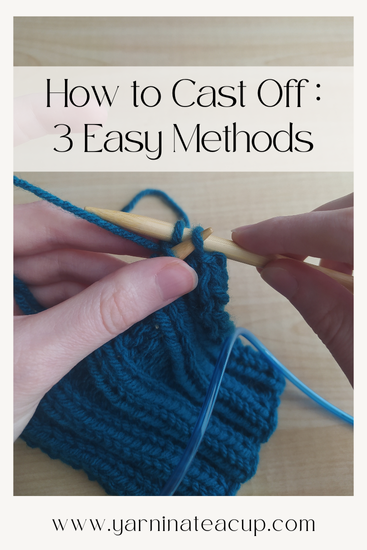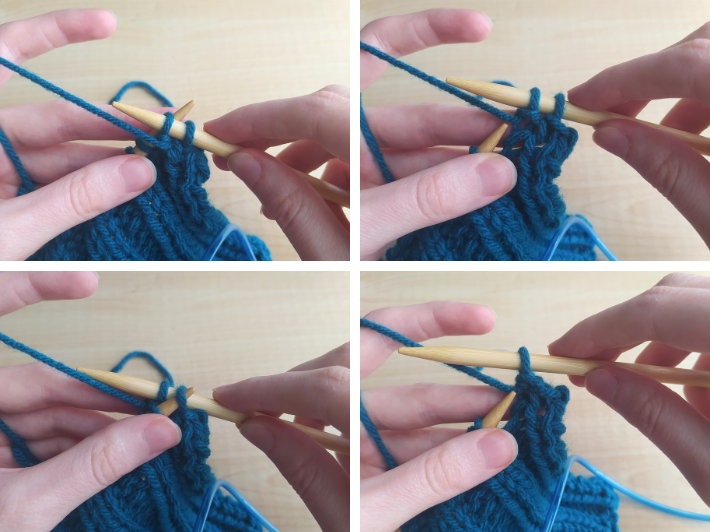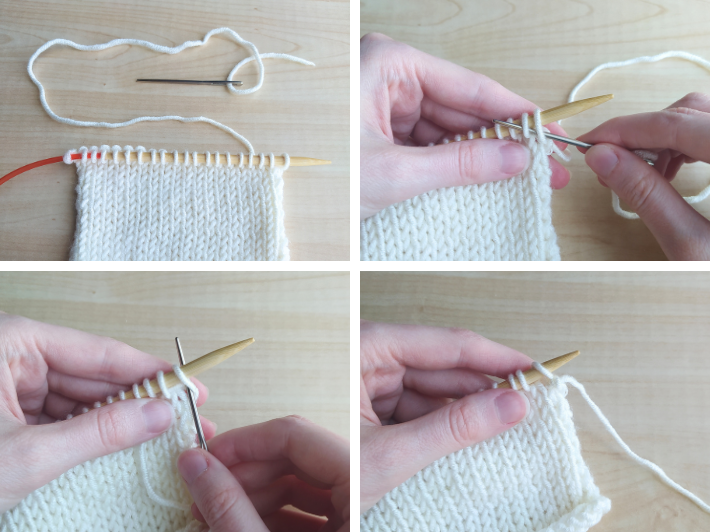
You worked for hours, you have made a spectacular knit item, and now it’s time to finish your project by casting off! As with any knitting technique, there are many ways to do this. Some methods prioritize ease, some are more decorative, and some give you a nice, stretchy finish! Here are 3 easy cast off methods to perfectly finish your knit project.
Standard Cast Off
The standard cast off (or bind off) method creates a clean edge. It doesn’t stretch very much, and is more suitable for flat projects like blankets and potholders. The motions can be a little fiddly at first, but once you get comfortable with them, this is an easy and fast way to cast off.
Begin by knitting the first two stitches. Insert your left needle into the first stitch you knit, from left to right. Then pull the first stitch over the second stitch and off of the right needle.

*Knit one stitch, then slide your left needle into the second stitch from the end of the needle, from left to right. Pull that stitch over the other stitch and off of the right needle.* Repeat from * to * until you have bound off all of your stitches.


Alternating Cast Off
The alternating cast off is similar to the standard cast off, but you cast off in pattern. If the stitch in the row below is a purl stitch, you purl it, and if that stitch is a knit stitch, you knit it. When you pass one stitch over another, the method is the same with both knit and purl stitches. This cast off is commonly used for ribbing. It’s more stretchy than the standard cast off, but not ideal for projects that need a lot of stretch.
You can use this bind off for any pattern; here I’m using it for a 2×2 rib. Start off by working the first two stitches in pattern. I have two knit stitches, so I knit both of them. Then, insert your left needle into the first stitch, from left to right, pull the first stitch over the second stitch, and off of the right needle.

Continue to work in pattern. *(Purl one stitch and pass the first stitch worked over the second stitch) two times. (Knit one stitch and pass the first stitch worked over the second stitch) two times.* Repeat from *to* until you have bound off all of your stitches.


Sewn Cast Off (Very Stretchy!)
If you’re looking for a simple but stretchy cast off, try the sewn cast off. You use a tapestry needle instead of your knitting needles, which seems intimidating, but it’s actually really easy! The sewn cast off is great for any project that needs to stretch, like toe up socks and hats.
This cast off requires a long tail, so cut your yarn to about 3 times the width of your project plus a couple of inches to be safe. Thread your yarn onto a tapestry needle, and *pass the needle through the first 2 stitches from right to left as if to purl. Pull the yarn all the way through the stitches, but do not pull it tight or else you will lose some of the stretch of this cast off. Next, insert your tapestry needle into the first stitch from left to right as if to knit, and drop that first stitch off of your knitting needle.* Repeat from * to * until you have bound off all but one of your stitches. In the last stitch, insert your tapestry needle purl wise and pull the yarn tight.


Other Ways To Cast Off
There’s no shortage of ways to cast off. What method you use depends on what finish you want and, more importantly, what technique you like doing. Here are some more fantastic ways to cast off:
Now you know 3 easy cast off methods and you can give your knit projects the amazing finish they deserve! Follow Yarn in a Teacup on Facebook to keep up to date with new articles. If you have any questions about this article or just want to share your favorite cast off method, leave a comment below! Happy knitting!
